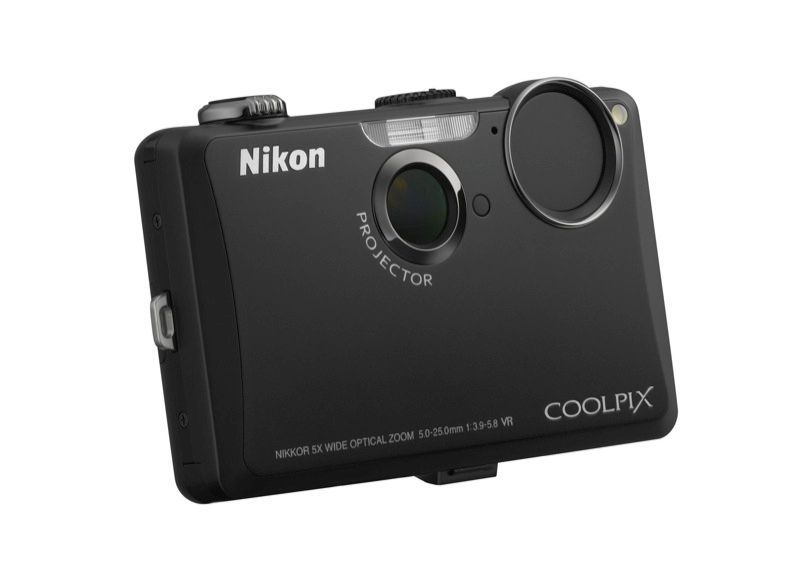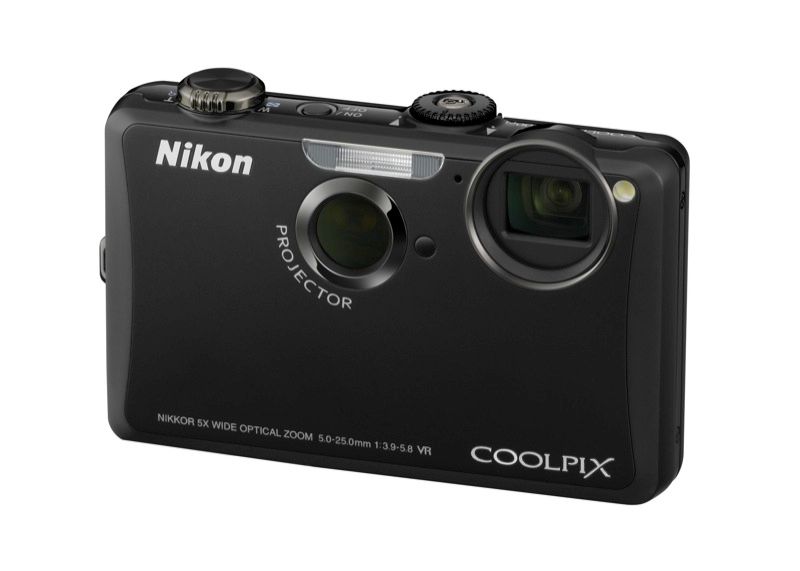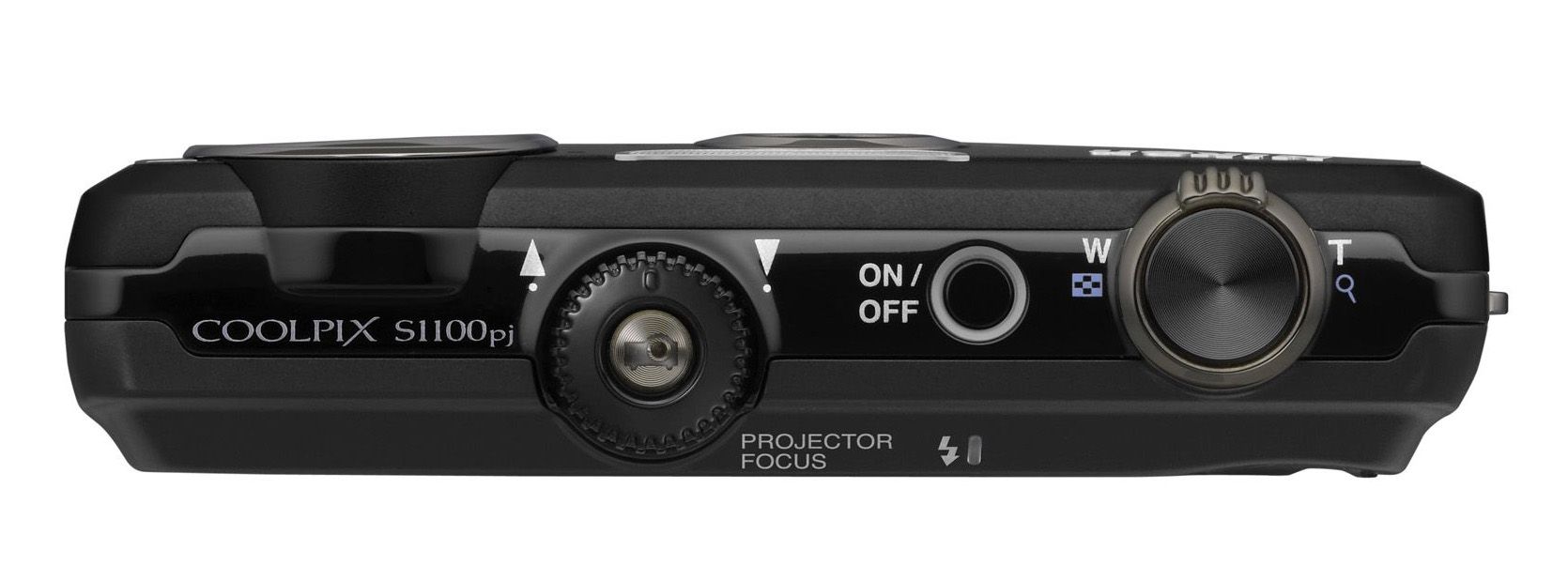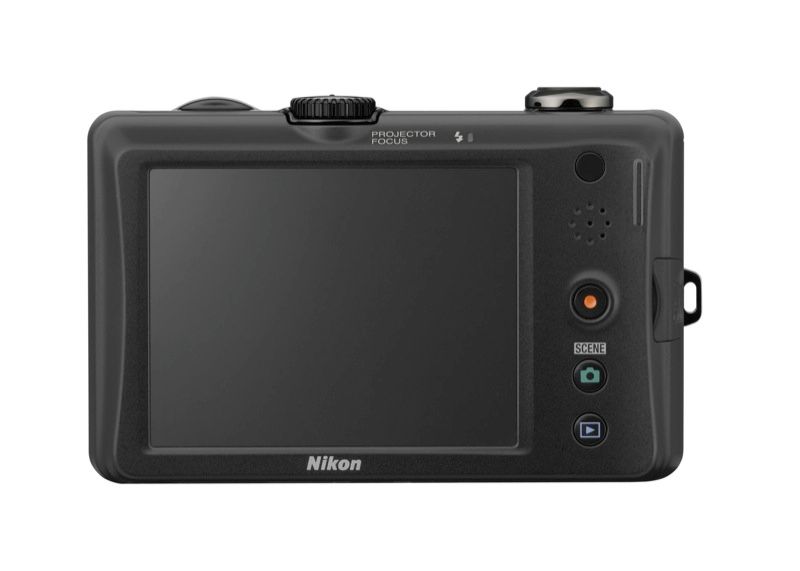Nikon’s Coolpix S1100pj is only the second camera in the world to feature and integrated projector, the first being Nikon’s Coolpix 1000pj; this is its update and replaces the previous model in the Coolpix range.
Our quick take
Nikon’s Coolpix S1100pj undoubtedly looks pricey, particularly when you compare it with similarly specified compacts from other makers that lack a projector; you can spend around half for similar snapping and moving shooting features.
Having said that, there’s a lot to be said of the sheer fun and funkiness of the projector (or having it as a business tool) and having that to use whenever you want can really be fun. It is a neat feature for business users and provides the camera another market place for its wares, so the advances over its predecessor the 1000pj will pay off here.
The inclusion of a small remote control for the projector within the camera is another clever touch and a panacea for the business user showing slideshow presentations and it makes plenty of sense. Nevertheless, the camera’s novelty value can quickly wear off, particularly when the battery starts to ebb away, as it did on our test, when use of the projector increased as we had to show all and sundry the shots and video we’d taken.
Problems with the image quality worry however, particularly at full zoom, when sharpness is not as crisp as we’d have liked and, while the image noise issues are, we suppose, fairly average for cameras with such high resolution sensors, the loss of shadow detail at lower ISOs and the loss of highlight details also tarnished the performance.
Overall then this is a fun camera to own and use, and while the novelty value makes it stand out from the compact camera crowd, the price you have to pay for it plus issues around the image quality mean it cannot attain the points heights we’d have thought possible.

Nikon Coolpix S1100pj - 3.5 / 5
| FOR | AGAINST |
|---|---|
|
|
The new Nikon Coolpix S1100pj has in its heart a 40% brighter, 14-lumen projector with a built-in stand and a much improved 3-inch touchscreen that combines a simple control interface for access to menus as well as allowing you to touch a relevant area of the screen to focus at that point and quickly take a snap in a single touch.
Another one-touch operation is for shooting HD 720p movies with sound, of course, and fast playback for both stills and video via the built in projector, of which more shortly. The camera’s other main features include a 14.1-megapixel sensor and a 5x zoom lens with Vibration Reduction (VR) built-in to help reduce camera shake, which it does rather well.
Available in black (tested here) silver, green and a rather smashing purple colour, the one immediate issue we believe might be the camera’s price, which at a penny short of £350, means you certainly pay for the addition of that clever but costly projector.
Nevertheless, the camera is fairly easy to use for most tasks, with a large shutter release and combined zoom control, on/off button and projector focus/on/off dial on the top plate. Each of these key controls is simple to use particularly the projector focusing achieved with a simple twist of its focus dial. A small stand flips out on the base of the camera and allows you to stand the camera on a flat surface and project onto a blank wall very easily.
The projector feature was a real winner over Christmas (when we tested the camera) drawing gasps of amazement from friends and family alike, but projection quality is only okay in anything other than a darkened room, particularly the video projection, but it still lacks detail compared with looking at images on a PC, for example.
Further gasps of amazement followed however, when we revealed to the watching audience how much the camera costs, but to be fair, this is a truly amazing bit of technology that certainly appeals to the younger generation and has real potential in nightclubs and at parties where the fun element you pay for in the projector really hits home.
The business user is another area Nikon have tapped into here because in a nice touch, the camera can project any computer file, be it image, video or, a text document. Broadening the appeal of the S1100pj into the business community is a good idea as it could easily be used for small slideshows or presentations and the fact there’s still no competition from any of the camera makers gives it a real chance to grow into this market sector. And when looked at in this way, the increased price of the camera, thanks to the projector, is far less than you’d pay for a “proper” business projector and the incumbent kit associated with that. (Sony have just announced a Handycam with integrated projector, but that’s yet to hit the market.)
The rest of the camera is however fairly run of the mill. The lens is ensconced vertically inside the camera’s left corner behind a large protective shield that slips out of the way when you turn the camera on. The built-in flash sits centrally on the front of the camera and while it’s small and underpowered, the location away from the lens axis should help keep redeye issue at bay, but it does not always prove to be the case, as redeye did appear in some of my shots, even with the redeye reduction flash mode switched on.
The projector’s port is directly below the flash but the only other external controls are the one-touch video button, a button to get to the Scene shooting modes (there are no manual controls, as such, apart from +/-2EV of exposure compensation) and a playback button, each of which sit on the back next to the screen.
Two touchscreen tabs on the left and bottom of the screen access controls for flash for the former and camera settings for the latter; flash control of auto, redeye reduction, off and slow synchro modes are on offer with the lower tab providing control for the resolution, focusing modes (including a clever smile timer that waits for everyone in shot to smile before firing the shutter automatically) among other items.
These include Face Detection AF allows this technology to also carry out Blink Detection that warns you if anyone has their eyes shut in a shot allowing you to reshoot the image. Movie setting are here, as well as controls over portrait shooting where you can apply three levels of skin “softening” to help get a more flattering effect.
Deeper controls are got at via a small spanner icon where monitor settings, date imprint, AF assist set up, VR control, a movie light, sound settings and memory format functions can all be sorted, among other features such as the controls over the blink detection warning system.
A Scene mode virtual button activates a new menu with four options: Easy Auto mode, where the camera picks the “correct” setting for the scene being shot (macro or portrait for example); a full Auto mode, then Smart Portrait where the camera can assess the person and the camera orientation among other things to get a good portrait snap with the minimum of fuss.
Confusingly, another Scene button then activates a list of a further 17 settings such as panoramic, landscape, sports and museum modes, to name a few, for the more usual camera modes typically offered on most cameras in some combination thereof.
A question mark appears on this screen too and this activates a Help Selection system; touch an option, such as Landscape and a new page appears offering information on the subject and how the camera will set itself to deal with scene mode you’ve selected. In Landscape you’re informed: “Use for landscapes pictures. The camera focuses at infinity”, which should give you a good idea of what the Help system has to offer. Either way, novice or more accomplished, this is a neat and helpful system and provides real back up for the novice user unfamiliar with the settings or the camera’s modes and what they mean.
The camera’s 28-140mm 5x zoom NIKKOR lens is sharp and offers a versatile focal length range while the 14.1-megapixel RGB CCD sensor has too many pixels for my liking as image noise becomes a problem at settings above ISO 800; the top sensitivity setting of ISO 3200 is almost unusable.
The skin softening system can be applied at capture and in playback via the projector but it can be destructive to finer details when shooting with it on, so use with caution. Colour and detail at lower sensitivities is very good though at ISO 400, shadow detail is marred by image noise and blockiness.
We also noted highlights seem to be compromised at ISO 400 and over, particularly if skin softening is applied as well, so a little experimentation was needed to get a good balance between the softening, sensitivity and detail in highlights.
On more general scenes, such as landscapes or when snapping indoors without flash, the camera fared much better but we still worry about the lack of finer detail at low ISO and full zoom where some of our ISO 80 images in daylight and outdoors of a snowy landscape, were oddly soft at full zoom. It was not camera shake though, as the VR was on and shutter speeds were easily fast enough to cope, at around 1/1000th sec.
White balance (WB) control was impressive, even under mixed lighting, so the WB performance is certainly very good indeed so that’s a big plus in our book and all those images and videos are stored on SD/SDHC/SDXC storage placed alongside the battery under a flap on the camera’s base; there’s an additional 79MB of internal storage as well good for just a couple of snaps.
To recap
The second of Nikon’s compacts cameras to feature a built-in projector (and only the second such camera in the world) is a neat compact that provides a really novel user experience thanks to the projector. Image quality lacks punch though and it’s pricey




